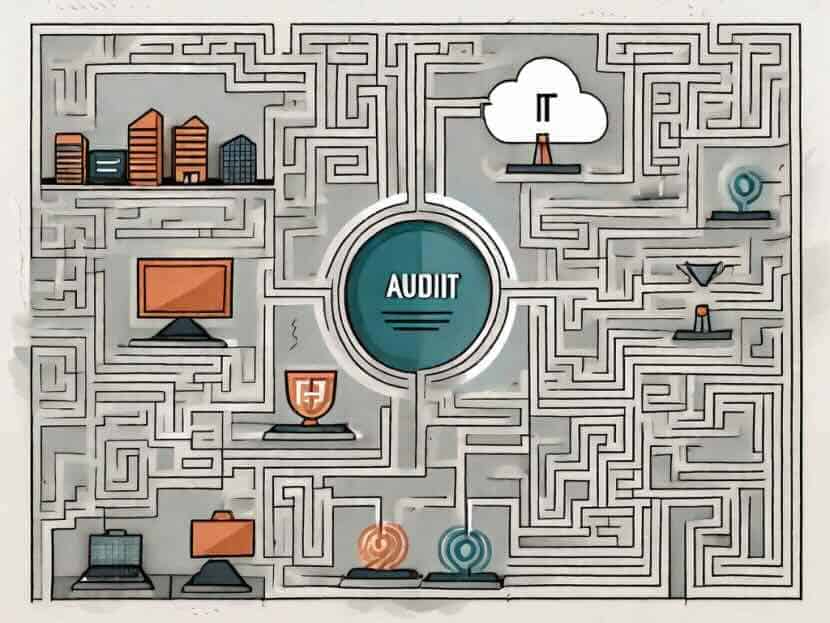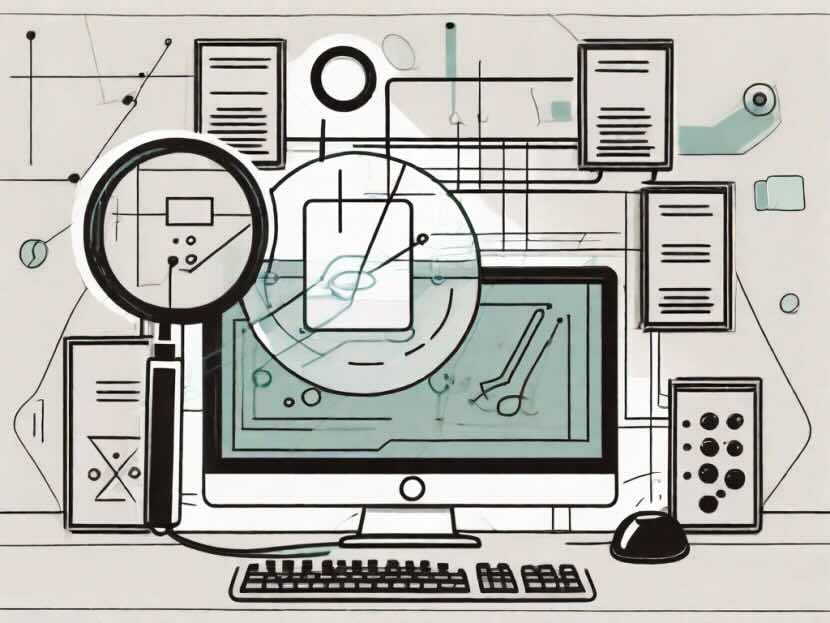- What is IT Audit and why it is important
- Steps Involved in IT Audit Process
- Define the scope of the IT audit
- Identify key stakeholders and their roles in the process
- Understand relevant regulations and standards related to IT audits
- Identify areas of potential risk and develop compliance plans
- Design a comprehensive audit plan with objectives, scope, timeline, and any special considerations.
- Execute audit tests based on the design plan, including physical inspections, interviews, and document reviews.
In today’s digital age, conducting IT audits has become essential for organizations to ensure the security and efficiency of their information technology systems. An IT audit involves an in-depth examination and evaluation of an organization’s IT infrastructure, policies, and controls. By identifying potential risks and vulnerabilities, IT audits help businesses mitigate the chances of data breaches, fraud, and operational inefficiencies. In this article, we will provide you with a comprehensive guide to the IT audit process, covering everything you need to know to conduct an IT audit successfully.
What is IT Audit and why it is important
Before diving into the details of the IT audit process, let’s first understand what IT audit means and why it holds such significance in today’s business environment.
An IT audit is an evaluation of an organization’s information technology systems, processes, and controls to ensure that they are operating effectively, securely, and in compliance with relevant regulations and industry standards. It helps identify any weaknesses or vulnerabilities that could pose a risk to the organization’s assets, operations, or reputation.
The importance of IT audits cannot be overstated. In today’s interconnected world, businesses heavily rely on technology to store, process, and transmit sensitive information. Any disruption, unauthorized access, or loss of data can have severe consequences, including financial losses, reputational damage, and legal liabilities.
With the increasing number of cyber threats and data breaches, organizations must proactively manage their IT risks. Regular IT audits play a crucial role in this process. They help organizations identify potential security gaps, assess the effectiveness of their security controls, and implement necessary improvements to protect their valuable assets.
Moreover, IT audits help organizations comply with regulatory requirements and industry best practices. Various laws and regulations, such as the General Data Protection Regulation (GDPR) and the Health Insurance Portability and Accountability Act (HIPAA),require organizations to implement specific security measures and safeguards to protect sensitive data. IT audits ensure that organizations are meeting these requirements and help them avoid costly penalties and legal consequences.
Furthermore, IT audits provide organizations with valuable insights into their IT infrastructure and operations. They help identify areas where technology can be optimized, processes can be streamlined, and costs can be reduced. Organizations can make informed decisions to improve their overall performance and productivity by evaluating the efficiency and effectiveness of IT systems and processes.
In conclusion, IT audits are essential for organizations to ensure their IT systems’ security, compliance, and efficiency. By conducting regular audits, organizations can proactively identify and address potential risks, protect their valuable assets, and maintain a competitive edge in today’s technology-driven business landscape.
Steps Involved in IT Audit Process
The IT audit process consists of several crucial steps that must be followed in a systematic and comprehensive manner. Let’s explore each step in detail:
Define the scope of the IT audit
It is essential to clearly define the scope of the IT audit before initiating the process. The scope should outline the specific areas of the organization’s IT infrastructure and operations that will be covered in the audit. This includes the hardware, software, networks, databases, and IT processes.
By defining the scope, auditors can ensure that the audit covers all the critical areas and provides a holistic view of the organization’s IT environment.
For example, in a large organization, the scope of the IT audit may include multiple data centers, various departments, and different geographical locations. This comprehensive approach allows auditors to assess the organization’s IT systems and controls across all relevant areas.
Identify key stakeholders and their roles in the process
Identifying the key stakeholders involved in the IT audit process is crucial for its success. This includes the management team, IT personnel, internal auditors, external consultants, and other individuals or departments with a vested interest in the organization’s IT systems and controls.
Each stakeholder should have clearly defined roles and responsibilities to ensure effective collaboration and coordination throughout the audit process.
For instance, the management team may be responsible for providing necessary resources and support, while IT personnel may assist auditors in accessing relevant systems and data. Internal auditors and external consultants may contribute their expertise in assessing controls and identifying areas for improvement.
Understand relevant regulations and standards related to IT audits
IT audits must comply with various regulations and industry standards to ensure the organization’s legal and regulatory compliance. It is vital to thoroughly understand these regulations and standards, such as the General Data Protection Regulation (GDPR),Payment Card Industry Data Security Standard (PCI DSS),and ISO 27001.
By understanding these frameworks, auditors can assess the organization’s compliance with specific requirements and identify any gaps or areas for improvement.
For example, if an organization processes credit card payments, auditors need to ensure that the IT systems and controls meet the requirements of the PCI DSS. This may involve assessing the organization’s network security, encryption practices, and access controls to protect cardholder data.
Identify areas of potential risk and develop compliance plans
Identifying areas of potential risk is a critical step in the IT audit process. This involves assessing the organization’s IT infrastructure, processes, and controls to identify vulnerabilities, weaknesses, or non-compliance with industry best practices.
Based on the identified risks, auditors should develop comprehensive compliance plans that outline the necessary controls, processes, and procedures to mitigate these risks effectively.
For instance, if auditors identify a lack of backup and disaster recovery procedures as a potential risk, they may recommend implementing regular data backups, offsite storage, and testing of the recovery process to ensure business continuity in the event of a system failure or data loss.
Design a comprehensive audit plan with objectives, scope, timeline, and any special considerations.
With the scope and compliance plans in place, auditors can design a detailed audit plan. The audit plan should clearly outline the audit objectives, the specific areas to be examined, the timeline for conducting the audit, and any special considerations or constraints that need to be addressed.
This provides a roadmap for the auditors, ensuring that the audit is conducted efficiently, within the allocated time frame, and covers all the necessary areas.
For example, suppose the audit objective is to assess the organization’s compliance with the GDPR. In that case, the audit plan may include a review of data protection policies, consent mechanisms, data breach response procedures, and vendor management practices. The timeline for the audit may be set to coincide with the organization’s annual data protection review.
Execute audit tests based on the design plan, including physical inspections, interviews, and document reviews.
Once the audit plan is finalized, auditors can proceed with executing the planned audit tests. This involves various activities, including physical inspections, interviews with key personnel, and reviews of relevant documents and records.
During these tests, auditors gather evidence, assess controls, and evaluate processes to determine the effectiveness and compliance of the organization’s IT systems and controls.
For instance, auditors may physically inspect server rooms to assess the physical security controls in place, conduct interviews with IT personnel to understand their roles and responsibilities, and review documentation such as IT policies, procedures, and incident reports to assess their adequacy and effectiveness.









